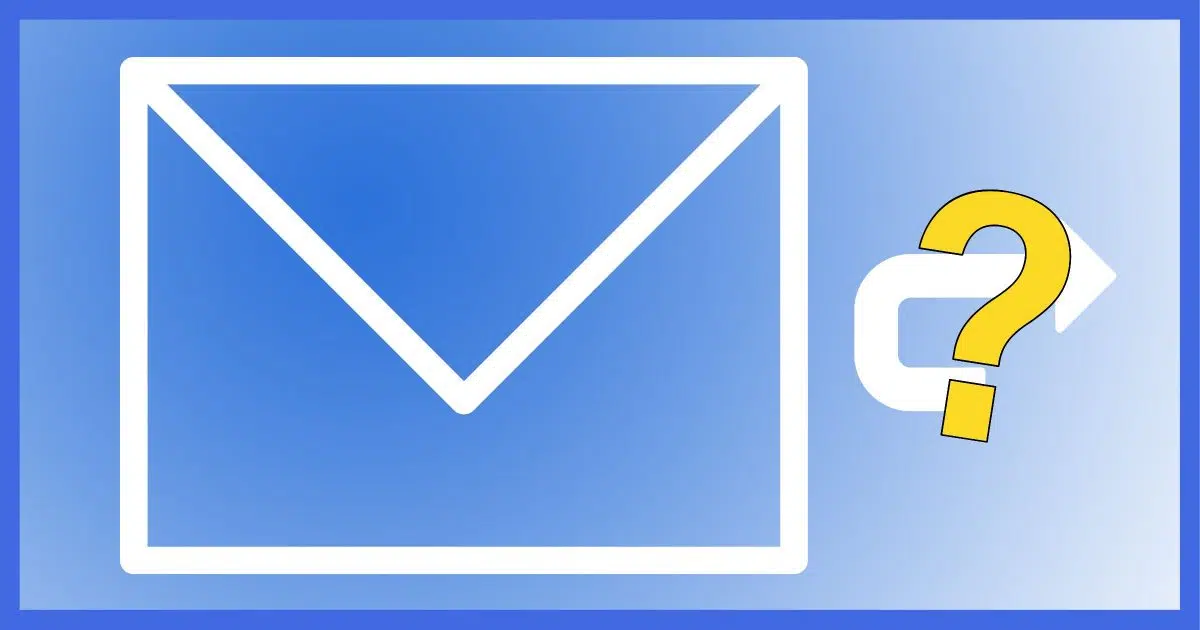It’s confusing, because you could, but you can’t.

You don’t.
It is not possible to tell if someone forwards your email.
Let me explain a little why the concept just doesn’t work.

Email forward notifications?
For the most part, email you send falls into a conceptual black hole, and you can’t reliably determine if it’s been opened, read, or forwarded. The only way to know for sure is when someone replies or you see some other sign of activity implying someone acted on it.
Email notification 101
The lure of the “notification on forward” fallacy is based on the “notification on receipt” feature, which is part of the official internet email specification.
When you send a message, it is possible to request what’s called a read receipt. When you send an email including a read receipt request and the recipient opens it, their email program emails a message back to you saying that the message has been opened (and presumably read). The recipient might see something like this:
The problem is that it rarely works. Most people just hit Ignore. In fact, most people have their email programs configured to completely ignore and never even display such requests.
Ask all you want, but you will not get notified.
Even though there’s a “notify on read” option (that rarely works), and a “notify on delivery”1 (ditto, for all the same reasons), there is no corresponding “notify on forward” request or option.
And even if there was, you can guess that most people would ignore those too.
And no, there’s no super-secret, hidden, behind-the-scenes email-tracking technology that can somehow reliably tell when you’ve opened, read, or forwarded an email. That would require the cooperation of every email program on the planet, and that’s just not going to happen.
Help keep it going by becoming a Patron.
Open tracking
There’s another technology that confuses this issue, and that’s called open tracking.
It is possible to tell if an email has been opened if and only if:
- The email message includes a reference to an image located on a server on the internet.
- The email recipient allows the image to display.
The act of fetching an image from a remote server to be displayed in an email message can be used to tell that the message was opened.
That’s exactly why all modern email programs don’t show images by default.
Spammers often use this technique to determine if a real person opens the email they sent. That’s why email programs default to not showing you images unless or until you tell the program otherwise.
And this still does not allow them to track if a message is forwarded.
Forward tracking could be possible
The thing that really confuses the issue, of course, is that forward tracking is conceptually possible.
On the open internet email system we all use today, it has not been implemented and never will be.
Closed systems are another matter.
I use the term “closed system” to mean environments where all email users — both senders and recipients — are using the same email software, systems, and servers: within a corporation, for example.
It’s conceivable that such a system might track the flow of an individual message, but only within the system. As soon as the message leaves the system (say to a recipient elsewhere on the internet), then such tracking will once again fail.
And for the record, I’m not aware of any closed systems that do this kind of tracking, but it is at least conceptually possible.
Do this
Accept that for the most part, email you send falls into a conceptual black hole, and you can’t reliably determine if it’s been opened, read, or forwarded. Only when someone replies or you see some other sign of activity related to the message can you be sure.
Speaking of email, be sure to subscribe to Confident Computing, my weekly newsletter. Less frustration and more confidence, solutions, answers, and tips in your inbox every week.
Podcast audio
Footnotes & References
1: Where read receipt is designed to happen when the message is opened, delivery receipt is designed to kick in when the message is delivered to the inbox, opened or not.







Regarding another poster’s mention of readnotify.com…
I set up a trial account using one of my e-mail addresses. Then, using the instructions provided by readnotify, I sent an e-mail to another of my e-mail addresses. Despite my having received, and viewed, the e-mail, readnotify still says “not yet” under “opened”.
All it did was add return-receipt requests (which I dutifully ignored), and converted my plain-text e-mail to HTML with embedded tracking images (which I dutifully did not show, even when enabling HTML).
As Leo said as his first sentence in his answer to “how do you”… “You cannot”.
As Leo says – this can happen in closed system. Systems are set up for this to work – especially in newer ERP releases. Someone creates a purchase request. It is for $1000. The system sees that they need to get it signed off by their boss, so an email gets sent – he okays it. The email gets sent to purchasing (or a record – not always a email – but some do work this way), and they create a Purchase order. The emails are tied in with the system. You can go back and track the work-flow of all emails/processes as related to the ERP system. This works fine and is needed in a closed system, but not something that people would allow in the ourside world – nobody wants a big brother looking over your shoulder!